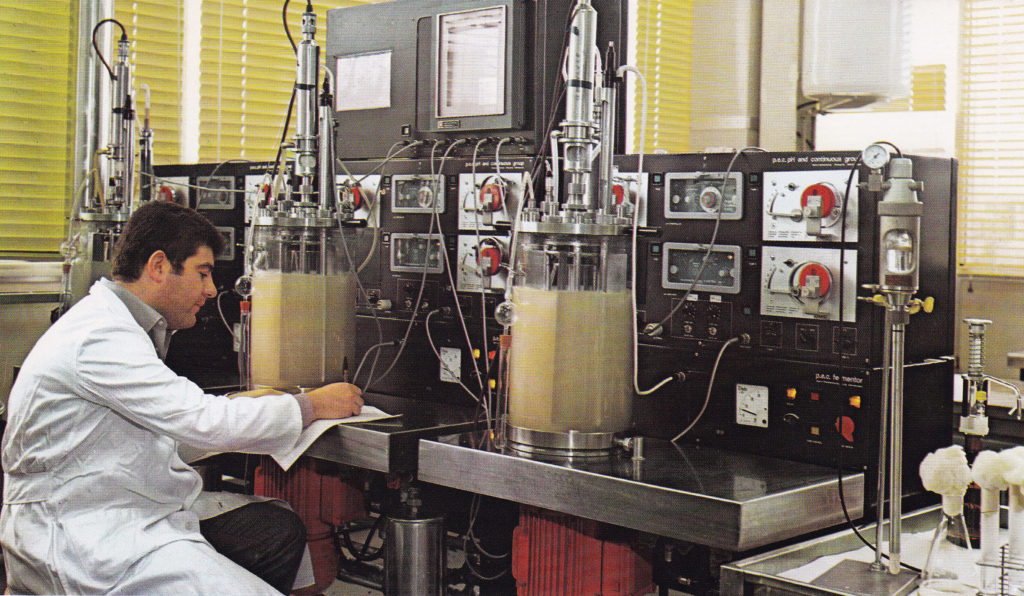A photo from 1971 shows me next to what were the most precious jewels of microbiological technique of the time: the Chemap fermenters. I worked for 20 years with that type of equipment, cultivating the most disparate types of microorganisms, both in pure and mixed cultures, batch cultures or continuous fermentations. The research in which I participated ranged from traditional techniques to those of genetic engineering. I have always had a "friendship" relationship with microorganisms, also because I have always made them subservient to my needs, exploiting them for their metabolisms. Contrary to the current culture of cleaning and disinfection which aspires to have more and more aseptic environments, man has always relied on the natural presence of microorganisms in various environments: be it alcoholic fermentation, cheese production, vegetable fermentation, etc... ; after all, they are the ones who allow us to live on this earth, enriching it with humus.
Although I had always been aware of their presence around and on me, I would never have believed that so much symbiosis between microorganisms and man could exist. This is what emerges from the results of the studies on the Human Microbiome begun in 2008; our body is more complex than previously thought, the interaction between microorganisms, organs and human cells is yet to be discovered.
I would never have imagined that more than a billion microorganisms lived on a square centimeter of skin and that the barrier effect against pathogens depended on them. Microbiota and Skin are one, they cannot be separated. It is therefore important that how much or what we put on the skin is compatible with the microorganisms that live on it, a compatibility that: synthetic soaps, disinfectants, creams, antibacterials and the drugs themselves do not have. This is the reason for the now uncontrolled explosion of various chronic skin diseases: from dermatitis to psoriasis, rosacea, etc. As far as I'm concerned, however, I had confirmation that natural soaps, those obtained by direct saponification of oils, are the only ones that respect the microorganisms of the skin, indeed with the veil of oils that they release on the skin they nourish the microbial flora and restore the barrier effect of the Microbiota. 
